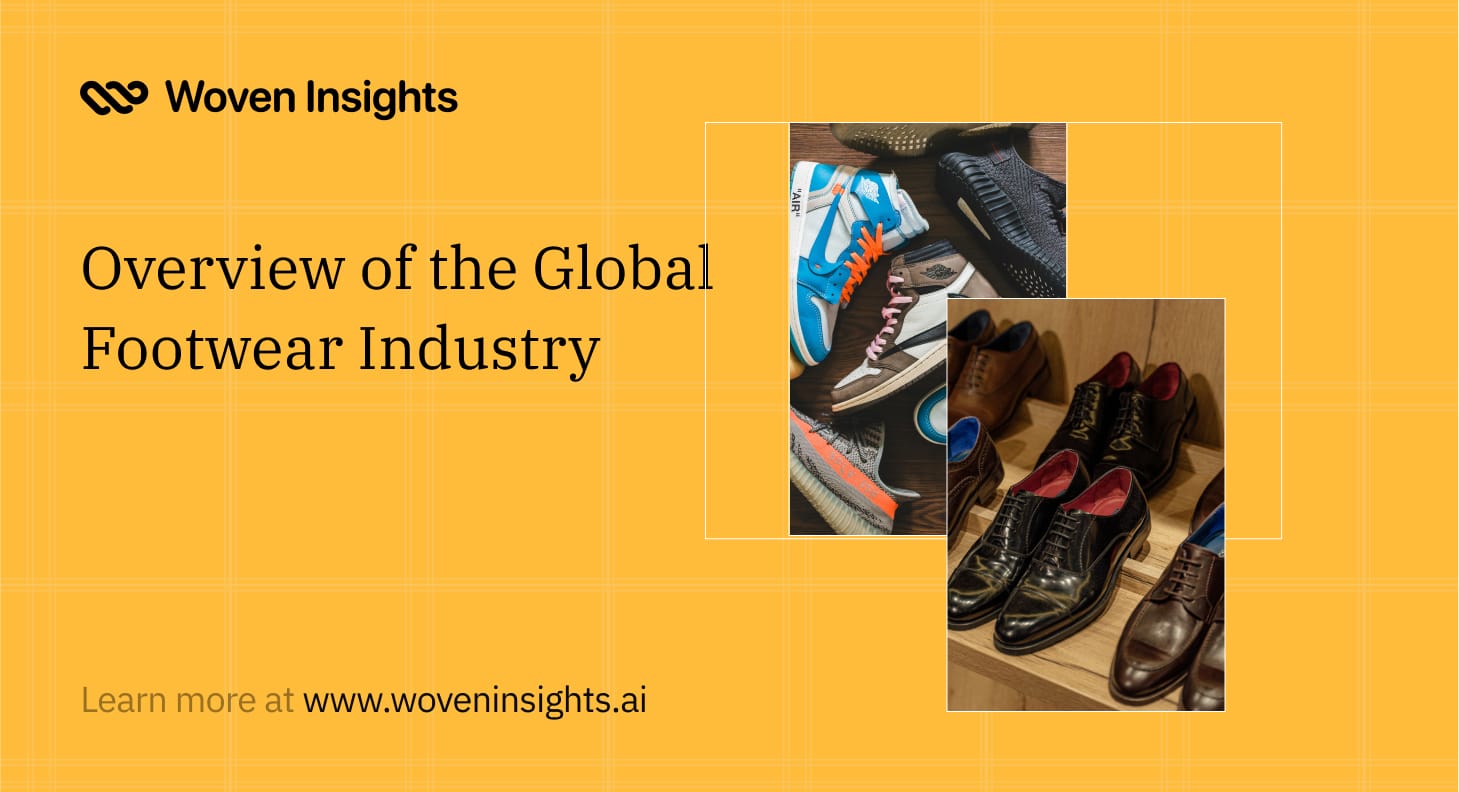Overview of the Global Footwear Industry

Introduction
Footwear is one of those everyday essentials that often says more about us than we realize. Not only does it protect our feet, it expresses who we are, whether that’s through a pair of sleek sneakers, rugged boots, or elegant heels.
It’s made up of everything from leather and rubber to innovative fabrics like recycled plastics and algae-based foams. And let’s not forget the role it plays in our lives: it helps us perform better in sports, stay comfortable during long days, and even make a fashion statement. The footwear industry is a fascinating world where culture, innovation, and commerce intersect, and it’s stepping into an exciting future.
Market Segmentation and Growth
The footwear market size was valued at USD 370.2 billion in 2023. The footwear industry is projected to grow from USD 390.56 billion in 2023 to USD 568.14 billion by 2032, exhibiting a compound annual growth rate (CAGR) of 4.80% during the forecast period (2024 - 2032).
Emerging markets, particularly in Asia-Pacific and Latin America, are driving significant growth, while established markets in North America and Europe continue to innovate and set trends.
Types of Footwear
Athletic Footwear: Designed for sports and fitness, this category includes running shoes, training shoes, and specialized footwear for activities like basketball or soccer.
Non-athletic Footwear: Includes casual (everyday shoes like sneakers, loafers, and sandals), formal, and specialty footwear such as orthopedic shoes, safety boots, and adaptive footwear for specific needs
Distribution Channels
- E-commerce: Online platforms have revolutionized footwear shopping, offering convenience, variety, and personalized recommendations.
- Brick-and-Mortar Stores: Physical retail spaces, including flagship stores and department stores, remain important for try-ons and immersive shopping experiences.
- Omnichannel Strategies: Brands are blending online and offline experiences, such as buy-online-pick-up-in-store (BOPIS) and virtual try-ons.
- Direct-to-Consumer (DTC): Many brands are bypassing traditional retailers and selling directly to consumers through their websites and apps.
Regional Insights
North America: A mature market with strong demand for athletic and casual footwear, driven by fitness trends and e-commerce.
Europe: Known for luxury and sustainable footwear, with brands like Gucci and Veja leading the way.
Asia-Pacific: The fastest-growing market, fueled by urbanization, rising incomes, and the influence of streetwear and K-pop culture.
Key Players in the Footwear Industry
Key players includes Adidas, Nike, Puma, Gucci, Sketchers
Trends and Innovations
Influencers and Social Media: Platforms like Instagram and TikTok have turned sneakers and limited-edition releases into cultural phenomena.
Movements and Campaigns: Sustainability and inclusivity movements are driving brands to adopt eco-friendly practices and expand size ranges.
Fabric Technology: Advances in materials, such as recycled plastics, algae-based foams are revolutionizing footwear design.
Design Approaches: Brands are focusing on modular designs, allowing consumers to customize their shoes for style and comfort.
Category Expansions: The rise of gender-neutral and adaptive footwear is catering to a broader audience, including people with disabilities.
Challenges In the Footwear Industry
Consumer demand for eco-friendly footwear faces a financial hurdle for brands as sustainability transitions can be expensive, while supply chain vulnerabilities, especially exposed during the pandemic, continue to disrupt production and distribution. Rising issues of counterfeit products and economic uncertainty, fueled by inflation, further threaten market growth.
Opportunities for Growth
Improving Design Inclusivity: Expanding size ranges, offering gender-neutral options, and creating adaptive footwear can tap into underserved markets.
Leveraging Technology: Using data-driven tools to understand consumer preferences and predict trends can help brands stay ahead.
Sustainability: Investing in eco-friendly materials and transparent supply chains can attract environmentally conscious consumers.
E-commerce and Personalization: Enhancing online shopping experiences with virtual try-ons and customizable designs can boost sales.
Collaborations and Limited Editions: Partnering with influencers, artists, and other brands can create buzz and drive demand.
Conclusion
The footwear industry is stepping into a future defined by innovation, inclusivity, and sustainability. While challenges like supply chain disruptions and counterfeit products persist, opportunities for growth are abundant. By embracing technology, prioritizing sustainability, and understanding cultural influences, brands can stride ahead in this competitive market. Whether it’s through groundbreaking designs or impactful campaigns, the footwear industry is poised to leave a lasting impression on consumers worldwide.
About Woven Insights
Woven Insights is a comprehensive market analytics solution that provides fashion brands with real-time access to retail market and consumer insights, sourced from over 70 million real shoppers and 20 million analyzed fashion products. Our platform helps brands track market trends, assess competitor performance, and refine product strategies with precision.
Woven Insights provides you with all the actionable data you need to create fashion products that are truly market-ready and consumer-aligned.
Click on the Book a demo button below to get started today.

